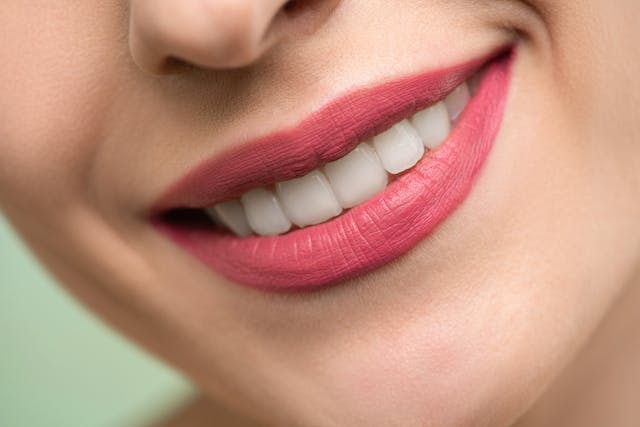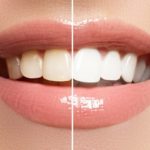Understanding tooth sensitivity
Dentine hypersensitivity, another name for tooth sensitivity, frequently manifests as an excruciating pain in reaction to pressure and temperature changes. It may also be triggered by acidic and sugary foods and beverages. Either way, it is a highly unpleasant sensation.
Dentine hypersensitivity can affect anyone between the ages of 15 and 70, although it is most common in those who are in their 20s to 40s. In fact, research indicates that approximately one in three Brits experience sensitive teeth at any given time.
Teeth whitening with sensitive teeth
If you experience tooth sensitivity, you may have some understandable anxiety about the prospect of undergoing teeth whitening treatment, assuming that it will make the condition worse. However you can still consider whitening as an option, but it is especially important to choose your treatment carefully and seek the guidance of a qualified dental professional. In order to determine if teeth whitening is safe and effective for you, your dentist will carefully examine your teeth and gums, review your medical history, and discuss the specifics of your tooth sensitivity issues. They will ensure that you have a clear understanding of the potential outcomes and of the benefits and risks associated with various treatments.
Using teeth whitening products or treatments without the guidance of a dentist can be risky and may lead to side effects and unpredictable results for anyone. Naturally, this is especially important to consider if you already have sensitivity issues. Also, you should avoid home remedies like brushing your teeth with baking soda or charcoal toothpaste. The rough ingredients in these products can damage or weaken tooth enamel and make your teeth even more sensitive – definitely not the result you want.
Tooth sensitivity and discomfort
If you have sensitive teeth, there are ways to minimise the discomfort of whitening your teeth at home. One effective method is to switch from using a hydrogen-peroxide-based product to one that contains carbamide-peroxide. However, if you are serious about avoiding pain or sensitivity while achieving noticeable results, it is recommended you opt for professional teeth whitening.
Even then, most people will suffer a degree of heightened sensitivity for a few days after completing a whitening procedure, including those who use blue light treatment. Individuals who are more prone to tooth sensitivity, on the other hand, may experience discomfort lasting up to one to two weeks in some cases.
Reducing discomfort during the teeth-whitening procedure
Teeth whitening can be accomplished with the use of a paste and a direct laser if it is performed in a professional environment by a trained practitioner. How it works is that the teeth are initially treated with the paste, and the components in the paste are then activated by a laser, producing a quick and easy way to whiten teeth. This works by first entering the tooth’s structure, after which it attacks and finally gets rid of the stains that have penetrated the teeth’s dentine. Teeth sensitivity and teeth whitening are both connected to the dentine; in other words, this layer of each tooth is responsible for both the whitening effect and sensitivity. Additionally, it plays a role in breaking down stains, making it a key contributor to the overall whitening process. One more thing – if you experience sensitivity during teeth whitening, the bleach in the whitening pastes may be irritating the dentine. In this case, your dentist can dilute or reduce the bleaching ingredient to fix this.
Foods that are beneficial and harmful to your dental health
When it comes to what you eat and drink, there are clearly good foods and bad foods. The consumption of sugars in food and drinks significantly contributes to the development of dental caries and will gradually erode the tooth enamel. The presence of bacteria in plaque also triggers an inflammatory response which leads to the deterioration of the gums, bone, and other structures that support your teeth.
The answer is to consume foods that will help keep your teeth and gums clean, get saliva flowing and kill or hold back bacteria. Some examples are fibre-rich fruits and vegetables, dairy products such as cheese, milk, plain yogurt, green and black teas, and foods with fluoride. On the other hand, foods to avoid are sweets, starchy and sugary foods, and carbonated soft drinks – all of which will inevitably lead to tooth decay.
Related Posts












